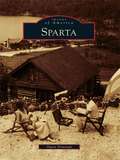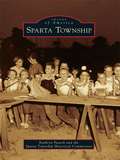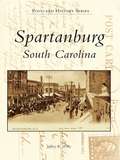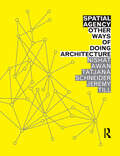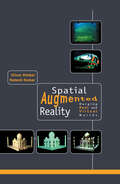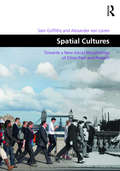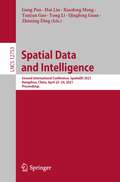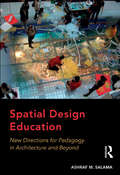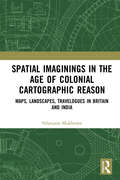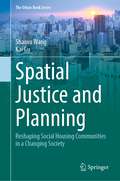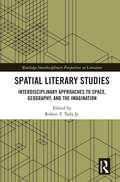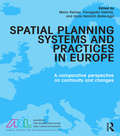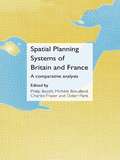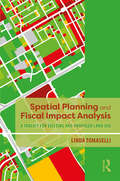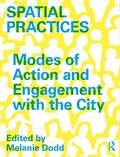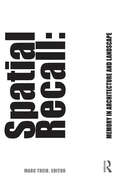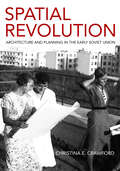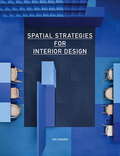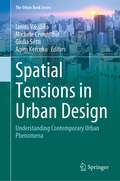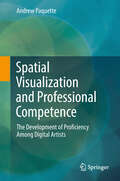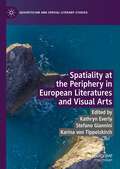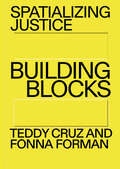- Table View
- List View
Sparta
by Gwen DonovanIncorporated in 1845, Sparta was once a Colonial farming village comprised of stone mills, general stores, and one-room schoolhouses. Summer visitors from surrounding metropolitan areas were drawn to Sparta in the late 1800s for the fresh mountain air. During that time, Thomas Edison came to Sparta to extract iron ore at his massive Edison village manufacturing plant on Sparta Mountain. The 1920s saw the development of Lake Mohawk, permanently changing the landscape of the township as the windswept Brogden Meadow was transformed into a sparkling 3-mile-long lake, which attracted hundreds of part-time residents. While Sparta is no longer a farming community, mining town, or seasonal vacation destination, today's residents take great pride in its small-town appeal and rich, colorful past.
Sparta Township
by Sparta Historical Commission Kathryn PaaschKnown for small-town charm and a beautiful countryside, the area known as Sparta Township was first settled in 1844, and over the next two years it would become home to those pursuing dreams in the logging industry. Rich in a variety of forests, and with the Rogue River and Nash Creek running through it, Sparta first developed saw and flour mills. In the late 1800s, the "Ridge" would develop along the western edge of town, where the land was prime for growing a variety of fruits. When the Pere Marquette Railroad passed through town, it brought opportunity for thriving industry, including the Welch Folding Bed Company, Carnation Creamery, and Sparta Foundry. Spartans enjoyed community picnics, apple smorgasbords, and The Lady of the Lake cruise ship that famously sank to the bottom of Camp Lake. A sense of close-knit community thrives in the area today.
Spartanburg, South Carolina (Postcard History)
by Jeffrey R. WillisPostcards are an important element of understanding our past, for they provide future generations a rare glimpse into a world that many times has disappeared under the aegis of expansion and progress. This book, containing over 200 vintage postcards, allows readers to see one of the South's most historic cities as it looked in the earlier part of the twentieth century--a time when the city was experiencing unparalleled growth. Spartanburg, South Carolina contains scenes of early textile mills, postcards from the early military training camp at Camp Wadsworth, and images of the rapid development of downtown, showcasing Morgan Square, Midtown, Magnolia Street, and Church Street.
Spatial Agency: Other Ways of Doing Architecture
by Nishat Awan Tatjana Schneider Jeremy TillThis book offers the first comprehensive overview of alternative approaches to architectural practice. At a time when many commentators are noting that alternative and richer approaches to architectural practice are required if the profession is to flourish, this book provides multiple examples from across the globe of how this has been achieved and how it might be achieved in the future. Particularly pertinent in the current economic climate, this book offers the reader new approaches to architectural practice in a changing world. It makes essential reading for any architect, aspiring or practicing.
Spatial Augmented Reality: Merging Real and Virtual Worlds
by Oliver Bimber Ramesh RaskarLike virtual reality, augmented reality is becoming an emerging platform in new application areas for museums, edutainment, home entertainment, research, industry, and the art communities using novel approaches which have taken augmented reality beyond traditional eye-worn or hand-held displays. In this book, the authors discuss spatial augmented r
Spatial Cultures: Towards a New Social Morphology of Cities Past and Present (Design and the Built Environment)
by Alexander Von Lünen Sam GriffithsWhat is the relationship between how cities work and what cities mean? Spatial Cultures: Towards a New Social Morphology of Cities Past and Present announces an innovative research agenda for urban studies in which themes and methods from urban history, social theory and built environment research are brought into dialogue across disciplinary and chronological boundaries. The collection confronts the recurrent epistemological impasse that arises between research focussing on the description of material built environments and that which is concerned primarily with the people who inhabit, govern and write about cities past and present. A reluctance to engage substantively with this issue has been detrimental to scholarly efforts to understand the urban built environment as a meaningful agent of human social experience. Drawing on a wide range of historical and contemporary urban case studies, as well as a selection of theoretical and methodological reflections, the contributions to this volume seek to historically, geographically and architecturally contextualize diverse spatial practices including movement, encounter, play, procession and neighbourhood. The aim is to challenge their tacit treatment as universal categories in much writing on cities and to propose alternative research possibilities with implications as much for urban design thinking as for history and the social sciences.
Spatial Data and Intelligence: Second International Conference, SpatialDI 2021, Hangzhou, China, April 22–24, 2021, Proceedings (Lecture Notes in Computer Science #12753)
by Gang Pan Xiaofeng Meng Zhiming Ding Yong Li Yunjun Gao Hui Lin Qingfeng GuanThis book constitutes the proceedings of the Second International Conference on Spatial Data and Intelligence, SpatialDI 2021, which was held during April 22-24, 2021 in Hangzhou, China.The 14 full papers and 7 short papers presented in this volume were carefully reviewed and selected from 72 submissions. They are organized in the topical sections named: traffic management, data science, and city analysis.
Spatial Design Education: New Directions for Pedagogy in Architecture and Beyond
by Ashraf M. SalamaDesign education in architecture and allied disciplines is the cornerstone of design professions that contribute to shaping the built environment of the future. In this book, design education is dealt with as a paradigm whose evolutionary processes, underpinning theories, contents, methods, tools, are questioned and critically examined. It features a comprehensive discussion on design education with a focus on the design studio as the backbone of that education and the main forum for creative exploration and interaction, and for knowledge acquisition, assimilation, and reproduction. Through international and regional surveys, the striking qualities of design pedagogy, contemporary professional challenges and the associated sociocultural and environmental needs are identified. Building on twenty-five years of research and explorations into design pedagogy in architecture and urban design, this book authoritatively offers a critical analysis of a continuously evolving profession, its associated societal processes and the way in which design education reacts to their demands. Matters that pertain to traditional pedagogy, its characteristics and the reactions developed against it in the form of pioneering alternative studio teaching practices. Advances in design approaches and methods are debated including critical inquiry, empirical making, process-based learning, and Community Design, Design-Build, and Live Project Studios. Innovative teaching practices in lecture-based and introductory design courses are identified and characterized including inquiry-based, active and experiential learning. These investigations are all interwoven to elucidate a comprehensive understanding of contemporary design education in architecture and allied disciplines. A wide spectrum of teaching approaches and methods is utilized to reveal a theory of a ’trans-critical’ pedagogy that is conceptualized to shape a futuristic thinking about design teaching. Lessons learned from techniques
Spatial Imaginings in the Age of Colonial Cartographic Reason: Maps, Landscapes, Travelogues in Britain and India
by Nilanjana MukherjeeThis volume explores how India as a geographical space was constructed by the British colonial regime in visual and material terms. It demonstrates the instrumentalisation of cultural artefacts such as landscape paintings, travel literature and cartography, as spatial practices overtly carrying scientific truth claims, to materially produce artificial spaces that reinforced power relations. It sheds light on the primary dominance of cartographic reason in the age of European Enlightenment which framed aesthetic and scientific modes of representation and imagination. The author cross-examines this imperial gaze as a visual perspective which bore the material inscriptions of a will to assert, possess and control. The distinguishing theme in this study is the production of India as a new geography sourced from Britain's own interaction with its rural outskirts and domination in its fringes. This book: Addresses the concept of "production of space" to study the formulation of a colonial geography which resulted in the birth of a new place, later a nation; Investigates a generative period in the formation of British India c. 1750–1850 as a colonial territory vis-à-vis its representation and reiteration in British maps, landscape paintings and travel writings; Brings Great Britain and British India together on one plane not only in terms of the physical geo-spaces but also in the excavation of critical domains by alluding to critics from both spaces; Seeks to understand the pictorial grammar that legitimised the expansive British imperial cartographic gaze as the dominant narrative which marginalised all other existing local ideas of space and inhabitation. Rethinking colonial constructions of modern India, this volume will be of immense interest to scholars and researchers of modern history, cultural geography, colonial studies, English literature, cultural studies, art, visual studies and area studies.
Spatial Justice and Planning: Reshaping Social Housing Communities in a Changing Society (The Urban Book Series)
by Kai Gu Shaoxu WangDespite the significance of urban justice in planning research and practice, how just societies and cities can be organised and achieved remains contested. Spatial justice provides an integrative and unifying theory concerning place, policies, people and their interplay, but ambiguities about its practical bases have undermined its application in planning. Through creating and substantiating a new conceptual framework comprising a morphological study, policy analysis and embodiment research, this book crystallises the spatiality of (in)justice and (in)justice of spatiality in the context of social housing redevelopment.Like many countries around the world, social housing in Aotearoa New Zealand is an area of contention, especially at the building and redevelopment stages. Protecting community character and human rights has been used by social housing tenants to resist changes, but the primary focus on material outcomes neglects broadening access to planning processes. Compact, mixed tenure and sustainable (re)developments are regarded as the just built environment, as they enable equal accessibility to all. But there are contradictions between the planned spatiality of justice and individuals’ socialised sensory space. Reconciliation of morphological differentiations in built forms and social cohesion remains a challenging task. This book focuses on the re-examination, integration and transferability of spatial justice. It makes a new contribution to urban justice theory by strengthening spatial justice and planning. Social housing areas are expected to adapt to changing social and economic demands while retaining much-valued established community character. This book also provides practical strategies for tackling complex planning problems in social housing redevelopment.
Spatial Literary Studies: Interdisciplinary Approaches to Space, Geography, and the Imagination (Routledge Interdisciplinary Perspectives on Literature)
by Robert T. Tally Jr.Following the spatial turn in the humanities and social sciences, Spatial Literary Studies: Interdisciplinary Approaches to Space, Geography, and the Imagination offers a wide range of essays that reframe or transform contemporary criticism by focusing attention, in various ways, on the dynamic relations among space, place, and literature. These essays reflect upon the representation of space and place, whether in the real world, in imaginary universes, or in those hybrid zones where fiction meets reality. Working within or alongside related approaches, such as geocriticism, literary geography, and the spatial humanities, these essays examine the relationship between literary spatiality and different genres or media, such as film or television. The contributors to Spatial Literary Studies draw upon diverse critical and theoretical traditions in disclosing, analyzing, and exploring the significance of space, place, and mapping in literature and in the world, thus making new textual geographies and literary cartographies possible.
Spatial Planning Systems and Practices in Europe: A Comparative Perspective on Continuity and Changes
by Mario Reimer Panagiotis Getimis Hans Heinrich BlotevogelIdeal for students and practitioners working in spatial planning, the Europeanization of planning agendas and regional policy in general Spatial Planning Systems and Practices in Europe develops a systematic methodological framework to analyze changes in planning systems throughout Europe. The main aim of the book is to delineate the coexistence of continuity and change and of convergence and divergence with regard to planning practices across Europe. Based on the work of experts on spatial planning from twelve European countries the authors underline the specific and context-dependent variety and disparateness of planning transformation, focusing on the main objectives of the changes, the driving forces behind them and the main phases and turning points, the main agenda setting actors, and the different planning modes and tools reflected in the different "policy and planning styles". Along with a methodological framework the book includes twelve country case studies and the comparative conclusions covering a variety of planning systems of EU member states. According to the four "ideal types" of planning systems identified in the EU Compendium, at least two countries have been selected from each of the four different planning traditions: regional-economic (France, Germany), Urbanism (Greece, Italy), comprehensive/integrated (Denmark ,Finland, Netherlands, Germany), "land use planning" (UK, Czech Republic, Belgium/Flanders), along with two additional case studies focusing on the recent developments in eastern European countries by looking at Poland and in southern Europe looking at Turkey.
Spatial Planning Systems of Britain and France: A Comparative Analysis
by Philip Booth Charles Fraser Michèle Breuillard Didier ParisSpatial Planning Systems of Britain and France brings together a wide selection of comparative essays to highlight the fundamental similarities and differences between the spatial planning in Great Britain and France: two countries that are near neighbours and yet have developed very different modes of planning in terms of their structure, practical application and underlying philosophies. Drawing on the outcomes of the Franco-British Planning Study Group and with a foreword by Vincent Renard of the Ecole Polytechnique in Paris, the book offers a comparative investigation of the basic contexts for planning in both countries, including its administrative, economic, financial and legal implications, and then move on to illustrate themes such as urban policy and transport planning through detailed analysis and case studies. From these investigations the book brings together planning concepts from both a national and European perspective, looking particularly at two current issues: the effects of urban growth on small market towns and the use of Public-Private partnerships to implement development projects. Spatial Planning Systems of Britain and France will prove invaluable to policy makers and practitioners in both countries at a time when national policy is beginning to look towards practice in other countries. The book is published simultaneously in English and French opening up a wider debate between the English-speaking and francophone worlds.
Spatial Planning and Fiscal Impact Analysis: A Toolkit for Existing and Proposed Land Use
by Linda TomaselliThe Spatial Fiscal Impact Analysis Method is an innovative approach to measure fiscal impact and project the future costs of a proposed development, recognizing that all revenues and expenditures are spatially related. The Spatial Method focuses on estimating existing fiscal impacts of detailed land use categories by their location. It takes advantage of readily available data that reflect the flows of revenues and expenditures in a city, using the tools of Geographic Information Systems (GIS). The result is a comprehensive yet transparent database for measuring existing fiscal impacts and projecting the impacts of future development or redevelopment. This book will provide readers with guidance as to how to conduct the Spatial Method in their own cities. The book will provide an overview of the history of fiscal analysis, and demonstrate the advantages of the Spatial Method to other methods, taking the reader step by step through the process, from analyzing city financial reports, determining and developing the factors that are needed to model the flows of revenues and expenditures, and then estimating fiscal impact at the parcel level. The result is a summary of detailed land use categories and neighborhoods that will be invaluable to city planners and public administration officials everywhere.
Spatial Practices: Modes of Action and Engagement with the City
by Melanie DoddThis book explores ‘spatial practices’, a loose and expandable set of approaches that embrace the political and the activist, the performative and the curatorial, the architectural and the urban. Acting upon and engaging with the public realm, the field of spatial practices allows people to reconnect with their own sense of agency through engagement in space and place, exploring and prototyping alternative futures in the here and now. The 24 chapters contain essays, visual essays and interviews, featuring contributions from an international set of experimental practitioners including Jeanne van Heeswijk (Netherlands), Teddy Cruz (Estudio Teddy Cruz + Fonna Forman, San Diego), Hector (USA), The Decorators (London) and OOZE (Netherlands). Beautifully designed with full colour illustrations, Spatial Practices advances dialogue and collaboration between academics and practitioners and is essential reading for students, researchers and professionals in architecture, urban planning and urban policy.
Spatial Recall: Memory in Architecture and Landscape
by Marc TreibArchitecture and designed landscapes serve as grand mnemonic devices that record and transmit vital aspects of culture and history. Spatial Recall casts a broad net over the concept of memory and gives a variety of perspectives from twelve internationally noted scholars, practicing designers, and artists such as Juhani Pallasmaa, Adriaan Geuze, Susan Schwartzenberg, Georges Descombes and Esther da Costa Meyer. Essays range from broad topics of message and audience to specific ones of landscape production. Beautifully illustrated, Spatial Recall is a comprehensive view of memory in the built environment, how we have read it in the past, and how we can create it in the future. Please note this is book is now printed digitally.
Spatial Revolution: Architecture and Planning in the Early Soviet Union
by Christina E. CrawfordSpatial Revolution is the first comparative parallel study of Soviet architecture and planning to create a narrative arc across a vast geography. The narrative binds together three critical industrial-residential projects in Baku, Magnitogorsk, and Kharkiv, built during the first fifteen years of the Soviet project and followed attentively worldwide after the collapse of capitalist markets in 1929.Among the revelations provided by Christina E. Crawford is the degree to which outside experts participated in the construction of the Soviet industrial complex, while facing difficult topographies, near-impossible deadlines, and inchoate theories of socialist space-making. Crawford describes how early Soviet architecture and planning activities were kinetic and negotiated and how questions about the proper distribution of people and industry under socialism were posed and refined through the construction of brick and mortar, steel and concrete projects, living laboratories that tested alternative spatial models. As a result, Spatial Revolution answers important questions of how the first Soviet industrialization drive was a catalyst for construction of thousands of new enterprises on remote sites across the Eurasian continent, an effort that spread to far-flung sites in other socialist states—and capitalist welfare states—for decades to follow.Thanks to generous funding from Emory University and its participation in TOME (Toward an Open Monograph Ecosystem), the ebook editions of this book are available as Open Access volumes from Cornell Open (cornellopen.org) and other repositories.
Spatial Strategies for Interior Design
by Ian HigginsThis inspirational and practical guide to organizing and planning interior spaces is packed with photographs, diagrams, models, case studies, and step-by-step instructions. It provides useful information on finding ways to start the design process, analyzing existing buildings, using planning diagrams, developing three-dimensional spatial compositions, designing in section, how to communicate your design ideas, and much more.
Spatial Strategies for Interior Design
by Ian HigginsThis inspirational and practical guide to organizing and planning interior spaces is packed with photographs, diagrams, models, case studies, and step-by-step instructions. It provides useful information on finding ways to start the design process, analyzing existing buildings, using planning diagrams, developing three-dimensional spatial compositions, designing in section, how to communicate your design ideas, and much more.
Spatial Tensions in Urban Design: Understanding Contemporary Urban Phenomena (The Urban Book Series)
by Ianira Vassallo Michele Cerruti But Giulia Setti Agim KercukuThis book provides an original research perspective to the field of contemporary urban conflicts. Even though violent conflicts have transformed cities during the XX century, it is nowadays possible to identify the phenomenon of “Tensions” as a specific contemporary both social and spatial urban changes catalyst.Through a collection of essays from various disciplines focusing on international case studies—from India to Europe to Latin America— the publication explores the multifaceted concept of “spatial tensions” as a lens for better understanding contemporary urban transformations. While tensions often depend on spatial dispositives and superstructures, they also offer a powerful key for design practices and strategies.
Spatial Transparency in Architecture: Light, Layering, and Porosity
by Camilo RosalesThis volume explores the concept of "spatial transparency"; a form of spatial continuity that articulates depth through permeable, layered, or porous three-dimensional organizations where interstitial light is present. Although transparency is a concept largely associated with the modern movement, the use of glazed components, and twentieth-century architectural discourse, spatial transparency is a form of depth awareness through intermediate domains, takes place through the interstitial fabric of a structure, and occurs when several consecutive domains are spatially and visually connected. These immersive environments invite active participation, not as one-way communication but as a series of visual and experiential exchanges, interdependencies, and relationships. Divided into four parts, the book examines spatial transparency in massive opaque constructions, light constructions, glass assemblies, and hybrid systems. It analyzes both the phenomenon of visual connectivity and continuity through intermediate spaces, and spatial transparency’s capacity for promoting and enabling graded, interflowing environmental transactions. Using historical and contemporary examples, it catalogs some of the most common and recurring configurations that manifest these characteristics. Over 20 international case studies from the Americas to Japan are presented to argue that environments exist in porous mediums and that by studying the openings, voids, light, and materials of layered and/or permeable organizations, important insights about space making can be revealed. Written for students and academics, this book explores various expressions of spatial transparency in architecture and helps connect their abstract ideas with significant built works, analytical drawings, and comparison charts.
Spatial Transparency in Architecture: Light, Layering, and Porosity
by Camilo RosalesThis volume explores the concept of "spatial transparency"; a form of spatial continuity that articulates depth through permeable, layered, or porous three-dimensional organizations where interstitial light is present. Although transparency is a concept largely associated with the modern movement, the use of glazed components, and twentieth-century architectural discourse, spatial transparency is a form of depth awareness through intermediate domains, takes place through the interstitial fabric of a structure, and occurs when several consecutive domains are spatially and visually connected. These immersive environments invite active participation, not as one-way communication but as a series of visual and experiential exchanges, interdependencies, and relationships.Divided into four parts, the book examines spatial transparency in massive opaque constructions, light constructions, glass assemblies, and hybrid systems. It analyzes both the phenomenon of visual connectivity and continuity through intermediate spaces, and spatial transparency’s capacity for promoting and enabling graded, interflowing environmental transactions. Using historical and contemporary examples, it catalogs some of the most common and recurring configurations that manifest these characteristics. Over 20 international case studies from the Americas to Japan are presented to argue that environments exist in porous mediums and that by studying the openings, voids, light, and materials of layered and/or permeable organizations, important insights about space making can be revealed.Written for students and academics, this book explores various expressions of spatial transparency in architecture and helps connect their abstract ideas with significant built works, analytical drawings, and comparison charts.
Spatial Visualization and Professional Competence: The Development Of Proficiency Among Digital Artists
by Andrew PaquetteThe computer graphics (CG) industry is an attractive field for undergraduate students, but employers often find that graduates of CG art programmes are not proficient. The result is that many positions are left vacant, despite large numbers of job applicants. This book investigates how student CG artists develop proficiency. The subject is important to the rapidly growing number of educators in this sector, employers of graduates, and students who intend to develop proficiency for the purpose of obtaining employment. Educators will see why teaching software-oriented knowledge to students does not lead to proficiency, but that the development of problem-solving and visualisation skills do. This book follows a narrow focus, as students develop proficiency in a cognitively challenging task known as ‘NURBS modelling’. This task was chosen due to an observed relationship between students who succeeded in the task, and students who successfully obtained employment after graduation. In the study this is based on, readers will be shown that knowledge-based explanations for the development of proficiency do not adequately account for proficiency or expertise in this field, where visualisation has been observed to develop suddenly rather than over an extended period of time. This is an unusual but not unique observation. Other studies have shown rapid development of proficiency and expertise in certain professions, such as among telegraph operators, composers and chess players. Based on these observations, the book argues that threshold concepts play a key role in the development of expertise among CG artists.
Spatiality at the Periphery in European Literatures and Visual Arts (Geocriticism and Spatial Literary Studies)
by Kathryn Everly Stefano Giannini Karina Von TippelskirchSpatiality at the Periphery in European Literatures and Visual Arts analyzes the impact migrations, both internal and external, have on Europe’s literary and visual representations in the nineteenth to twenty-first centuries. The volume aims to subvert a centripetal reading of European cultural production by including peripheral thinkers, writers, and visual artists operating in transcultural contexts. The essays highlight and investigate the fertile artistic discourses generated in the spatial peripheries outside of Europe or its inner peripheries. The volume addresses the need for geocritical readings that overcome the engrained dichotomy of centers-peripheries. By doing so, the book brings a more nuanced approach to national literatures and proposes the idea of “contact zones of imaginative interaction”.
Spatializing Justice: Building Blocks
by Fonna Forman Teddy CruzA manifesto calling for a new kind of architecture that confronts social and economic inequality and uneven urban growth.Spatializing Justice calls for architects and urban designers to do more than design buildings and physical systems. Architects should take a position against inequality and practice accordingly. With these thirty short, manifesto-like texts—building blocks for a new kind of architecture—Spatializing Justice offers a practical handbook for confronting social and economic inequality and uneven urban growth in architectural and planning practice, urging practitioners to adopt approaches that range from redefining infrastructure to retrofitting McMansions. These building blocks call for expanded modes of practice, through which architects can imagine new spatial procedures, political and economic strategies, and modalities of sociability. Challenging existing exclusionary policies can advance a more experimental architecture not bound by formal parameters. Architects must think of themselves as designers not only of things but of civic processes, complicate the ideas of ownership and property, and imagine new sites of research, pedagogy, and intervention. As one of the texts advises, &“The questions must be different questions if we want different answers.&” Copublished with Hatje Cantz Verlag
